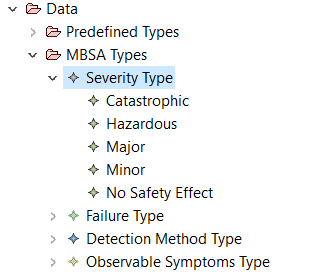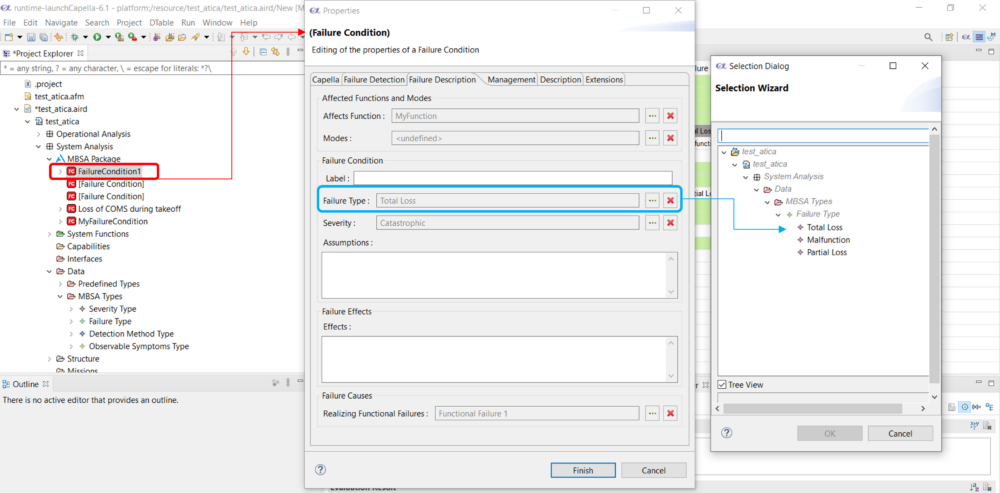Customize the safety analysis framework to support specific processes
The preliminary versions of ATICA were conceived to support primarily the safety analysis processes of the aerospace industry, based on ARP-4761A.

Starting from 2024, ATICA includes additional features to customize the safety analysis framework and tailor the taxonomies and vocabulary used to other normative standards and industrial policies. ATICA4CAPELLA addon provides basic templates for typical safety analysis, such as
- Functional Hazard Analysis (FHA),
- Failure Modes and Effects Analysis (FMEA),
- and Failure Modes and Effects Summary (FMES)
which with the new features could make use of user-defined categories to describe failure attributes such as its type, severity or detectability.
Setting up the safety analysis framework
Prior to starting a safety analysis such FHA or FMEA, the user shall define the set of properties that will be used to support the process. This is done through the declaration of a set of categories that will be later on used to describe attributes on failure conditions, functional failures and failure modes.
The currently supported categories are:
Severity TypeFailure TypeDetection Method TypeObservable Symptoms Type
These categories can be initialized under the Data folder in a Capella project, and each category supports as many fields as needed using their corresponding Literal objects.
In the following example, the typical severity categories used in the aerospace context are defined using the new Data objects. Note that the name of each field is defined by the user, allowing for instance the creation of new categories such as Critical, used in other industrial contexts instead of Hazardous. The same can be done with the other categories, in the example Failure Type has fields Total Loss, Partial Loss and Malfunction.
 |  |
The Detection Method Type can be used to define fields like continuous monitoring or periodic inspection; while the Observable Symptoms Type could have options like signal out of bounds, no signal, noise on signal, etc.
To create the categories, from the project explorer on the left hand side of the screen, right click on Data, Add Capella Element and select the category to be created (Severity Type, Failure Type…). After this, righ click on the new category, Add Capella Element and select the corresponding Literal. For convenience, these items can be created under a folder (Data Pkg) inside Data.
 |  |
Consolidate a safety analysis library
The newly created safety analysis types can be consolidated and reused across multiple projects using a Capella Library. In order to do so, define the types directly from the Library, or drag and drop the types defined in the Project to a Library.

Use the new types in safety analysis
The types can be used from the dialog boxes used to specify the features of the failure elements (Failure Condition, Functional Failure and Failure Modes) or directly from the safety analysis dashboards (like in the bottom image, showing the severity classification used in the Functional Hazard Analysis).


Get in touch
Get in touch if you would like a demo or if you need support to customize ATICA framework to specific industrial standards.




